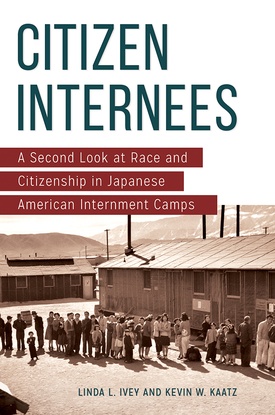Each spring semester, my wife, a professor in the online Information School at San José State University, team-teaches a course entitled “History of the Book.” One class assignment has students produce a historical paper about a local library of their choice. Since many of the students are from West Coast areas, often these papers deal with libraries serving communities whose Japanese American residents were uprooted and incarcerated during World War II. Had one of my wife’s past students opted to focus on the Redwood City Public Library, this person likely would have devoted some space to discussing its Karl A. Vollmayer Local History Room, including a collection of letters and other documents within it known as the Morrish Collection. Named after Elmer Morrish (1886-1957), a Redwood City banker, this archive consists of a back-and-forth correspondence between Morrish and the Redwood City Nikkei camp inmates relative to their wartime finances and property management that resourcefully contextualizes an important and tragic chapter of American history. It is the primary (and sometimes quite personal) documents in the Morrish Collection that served Linda Ivey and Kevin Kaatz, historians at California State University, East Bay, as their principal research data for Citizen Internees.
Located on the San Francisco Peninsula in Northern California’s Bay Area, between the cities of San José and San Francisco, Redwood City is the county seat of San Mateo County. The fortuitous combination of a burgeoning immigrant Japanese/Japanese American population, a temperate climate (cool morning breezes and fog with afternoon warmth and sunshine), flat land, fertile soil, and a comparatively tolerant mainstream population proved ideal for chrysanthemum cultivation in the early 20th century. This situation eventually led to mid-1920s Redwood City, with its landscape profusely dotted with Japanese flower growers and greenhouses sited mainly on five-acre parcels and a crop generating an annual income of $7 million, to being christened by its chamber of commerce as the “Chrysanthemum Center of the World.” This story, augmented by the booming floriculture period enjoyed (after the 1929 economic crash) by Nikkei in the 1930s, has been well documented — in a 1994 PBS documentary film by Dianne Fukami, Chrysanthemums and Salt: The New Americans Series, a 2004 San José State University history master’s thesis by Jagruti Patel entitled Japanese Americans in Redwood City: A Local History, and a 2017 Japanese American Museum of San Jose presentation (The Proudest of All Flowers: Chrysanthemum Cultivation, Japanese American Community & Suburban Boosterism in Redwood City, California, 1906-1942) by Stanford University doctoral student Paul Nauert.
As stated by Ivey and Kaatz in their opening chapter, their book is not a definitive treatment of the Japanese American World War II social catastrophe, but “rather it is an invitation to explore these letters (in the Morrish Collection) and consider the ways in which people functioned as citizens and legal residents within a state of incarceration (p. 11).” What is meant by this statement is spelled out in the remainder of the book. Notwithstanding that most Redwood City Nikkei were essentially stripped of their right to earn a living while incarcerated during the war at the Tanforan Assembly Center in the Bay Area and the Topaz Relocation Center in Utah, they were still expected, as were inmates in other such camps, to exercise to some degree their citizen obligations. These included paying their property taxes as well as federal and state income taxes, which covered earnings coming from outside the camps and the meager sums paid for their work within camp, and to do so promptly in order to avoid being assessed late fees.
The heart of Citizen Internees is the steady stream of mailings, numbering some 2,000, transacted between Morrish and the Redwood City inmates, which are excerpted throughout the first half of the book and selectively reproduced in full in the book’s closing half. These letters, businesslike but also cordial and sometimes poignant, make it evident that Morrish protected the properties of the imprisoned population, liquidated their holdings and personal possessions with dispatch and distributed the proceeds equitably, oversaw the propriety of the designated wartime tenants’ behavior via periodic site visitations, and also collected rents from delinquent tenants as needed and secured new tenants. Moreover, Morrish wrote reference letters and provided testimonies that helped Redwood City inmates to leave camp for the purposes of work, education or military service. When the camps were closing, Morrish stepped in to facilitate his clients-cum-neighbors having as smooth a return as possible under the circumstances to their Redwood City homes and gardens.
A very affecting section of this book is its epilogue, which provides a short history of Elmer Morrish. It details that in 1956, he was honored by the Redwood City Chamber of Commerce naming him as the recipient of its “Man of the Year” award. Although his wartime role vis-à-vis Japanese Americans was not mentioned in this connection, the following year that community pooled their resources and sent Morrish on a round-the-world cruise, including a tour of Japan. A few months later, he passed away at age 71. Arguably, his finest legacy, as Citizen Internees exemplifies, is the Morrish Collection, a precious gift that keeps on giving. Is there a similarly bountiful archive in your local library? If so, access it and discover what stories abound in it so that you can learn from them and perhaps later share them with others in the spirit of Linda Ivey and Kevin Kaatz.
CITIZEN INTERNEES: A SECOND LOOK AT RACE AND CITIZENSHIP IN JAPANESE AMERICAN INTERNMENT CAMPS
By Linda L. Ivey and Kevin W. Kaatz
(Santa Barbara, Calif.: Praeger, 2017, 277 pp., $48 hardcover)
*This article was originally published by Nichi Bei Weekly on July 19, 2018.
© 2018 Arthur Hansen / Nichi Bei Weekly








